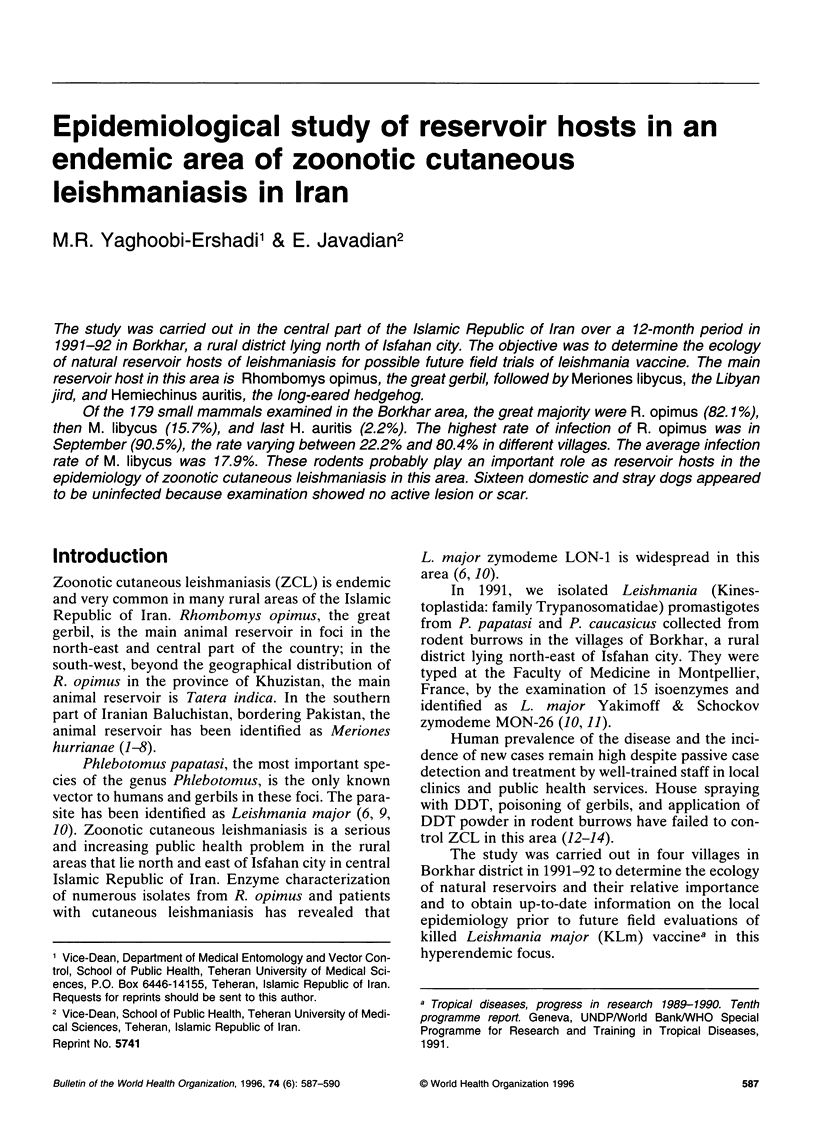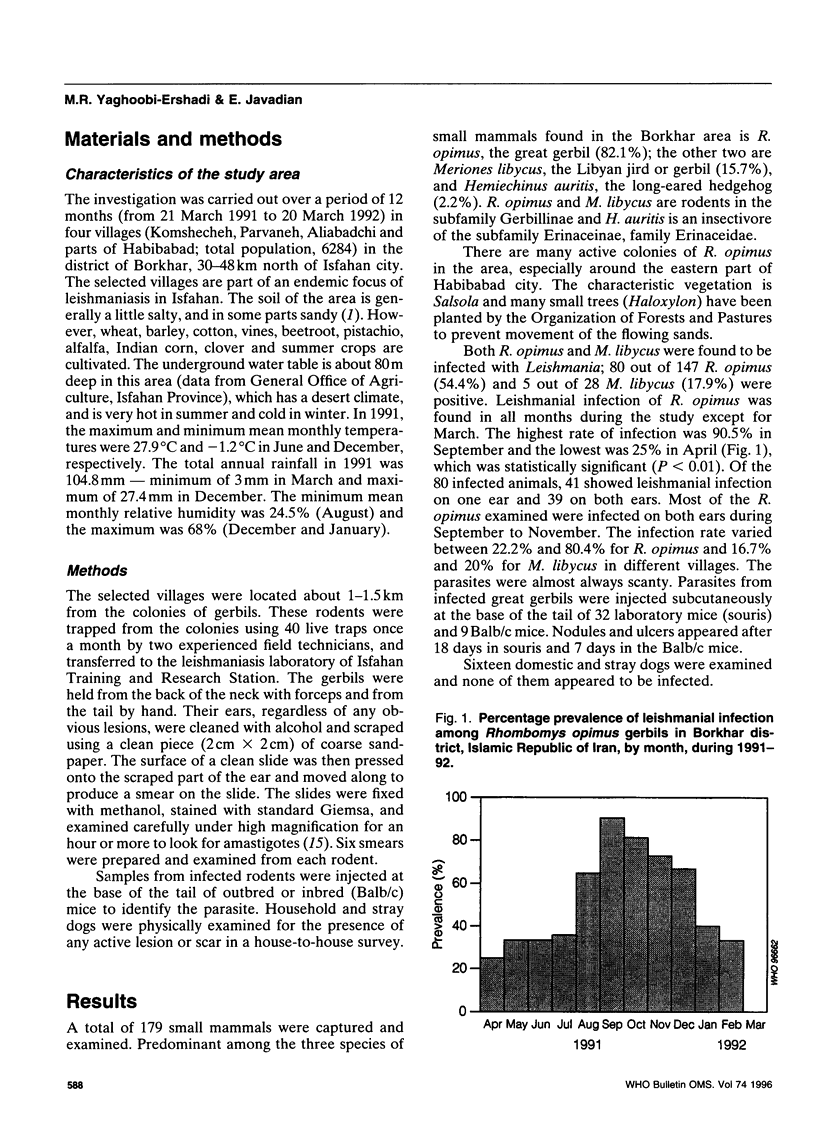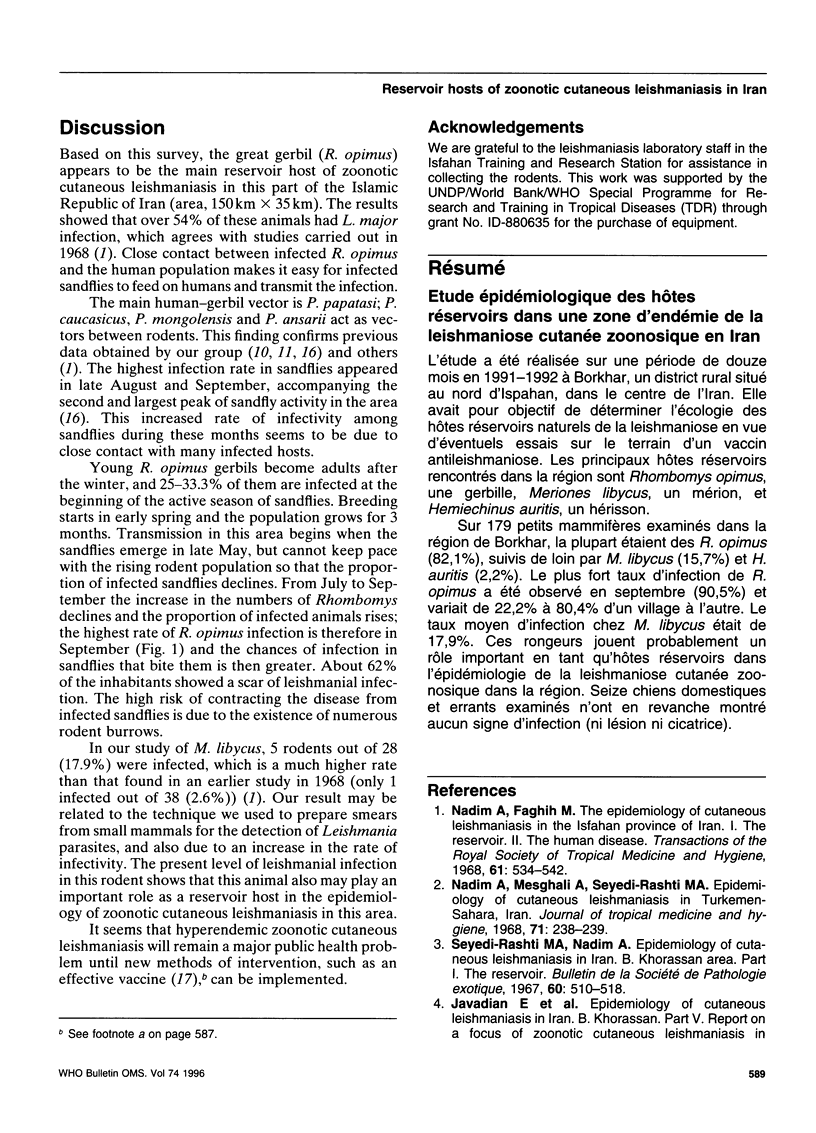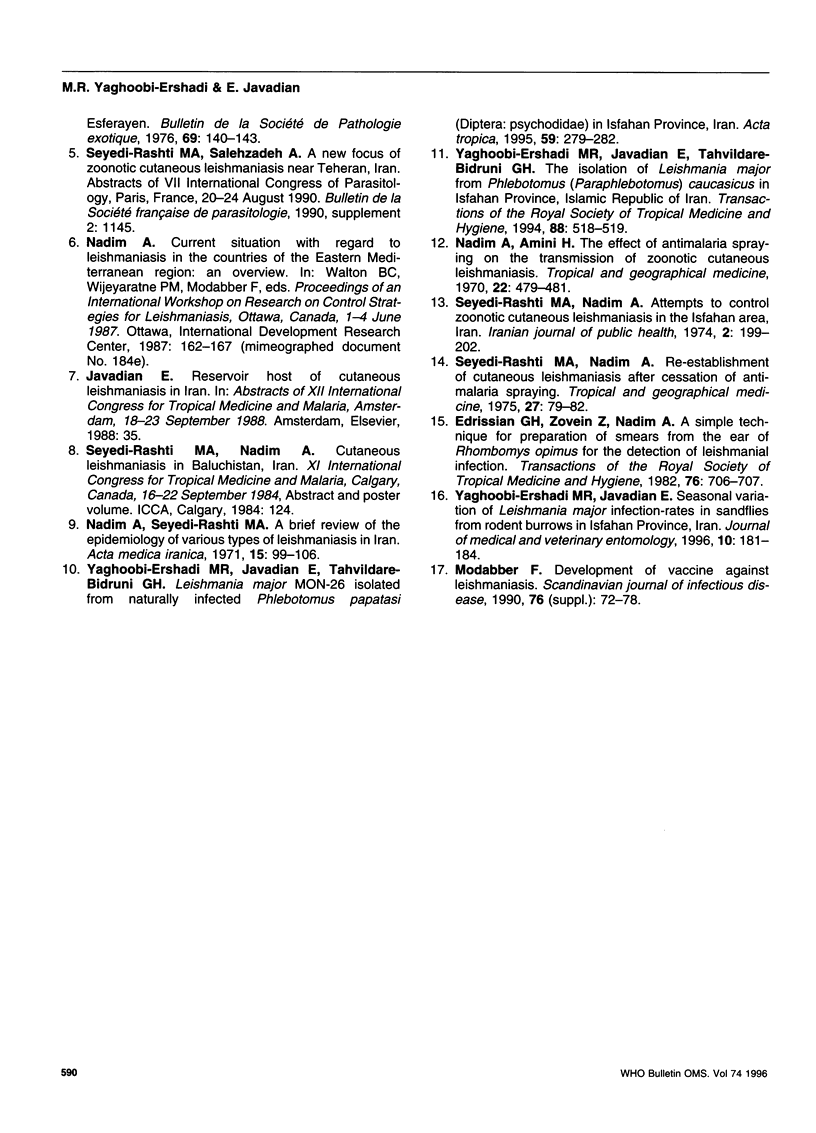Abstract
The study was carried out in the central part of the Islamic Republic of Iran over a 12-month period in 1991-92 in Borkhar, a rural district lying north of Isfahan city. The objective was to determine the ecology of natural reservoir hosts of leishmaniasis for possible future field trials of leishmania vaccine. The main reservoir host in this area is Rhombomys opimus, the great gerbil, followed by Meriones libycus, the Libyan jird, and Hemiechinus auritis, the long-eared hedgehog. Of the 179 small mammals examined in the Borkhar area, the great majority were R. opimus (82.1%), then M. libycus (15.7%), and last H. auritis (2.2%). The highest rate of infection of R. opimus was in September (90.5%), the rate varying between 22.2% and 80.4% in different villages. The average infection rate of M. libycus was 17.9%. These rodents probably play an important role as reservoir hosts in the epidemiology of zoonotic cutaneous leishmaniasis in this area. Sixteen domestic and stray dogs appeared to be uninfected because examination showed no active lesion or scar.
Full text
PDF



Selected References
These references are in PubMed. This may not be the complete list of references from this article.
- Edrissian G. H., Zovein Z., Nadim A. A simple technique for preparation of smears from the ear of Rhombomys opimus for the detection of leishmanial infection. Trans R Soc Trop Med Hyg. 1982;76(5):706–707. doi: 10.1016/0035-9203(82)90255-3. [DOI] [PubMed] [Google Scholar]
- Nadim A., Amini H. The effect of antimalaria spraying on the transmission of zoonotic cutaneous leishmaniasis. Trop Geogr Med. 1970 Dec;22(4):479–481. [PubMed] [Google Scholar]
- Nadim A., Faghih M. The epidemiology of cutaneous leishmaniasis in the Isfahan province of Iran. I. The reservoir. II. The human disease. Trans R Soc Trop Med Hyg. 1968;62(4):534–542. doi: 10.1016/0035-9203(68)90140-5. [DOI] [PubMed] [Google Scholar]
- Nadim A., Seyedi-Rashti M. A., Mesghali A. Epidemiology of cutaneous leishmaniasis in Turkemen Sahara, Iran. J Trop Med Hyg. 1968 Sep;71(9):238–239. [PubMed] [Google Scholar]
- Seyedi-Rashti M. A., Nadim A. Epidemiology of cutaneous leishmaniasis in Iran. B. Khorassan area. I. The reservoirs. Bull Soc Pathol Exot Filiales. 1967 Nov-Dec;60(6):510–514. [PubMed] [Google Scholar]
- Seyedi-Rashti M. A., Nadim A. Re-establishment of cutaneous leishmaniasis after cessation of anti-malaria spraying. Trop Geogr Med. 1975 Mar;27(1):79–82. [PubMed] [Google Scholar]
- Yaghoobi-Ershadi M. R., Javadian E. Seasonal variation of Leishmania major infection rates in sandflies from rodent burrows in Isfahan province, Iran. Med Vet Entomol. 1996 Apr;10(2):181–184. doi: 10.1111/j.1365-2915.1996.tb00726.x. [DOI] [PubMed] [Google Scholar]
- Yaghoobi-Ershadi M. R., Javadian E., Tahvildare-Bidruni G. H. Leishmania major MON-26 isolated from naturally infected Phlebotomus papatasi (Diptera: Psychodidae) in Isfahan Province, Iran. Acta Trop. 1995 Aug;59(4):279–282. doi: 10.1016/0001-706x(95)92834-3. [DOI] [PubMed] [Google Scholar]
- Yaghoobi-Ershadi M. R., Javadian E., Tahvildare-Bidruni G. H. The isolation of Leishmania major from Phlebotomus (Paraphlebotomus) caucasicus, in Isfahan province, Islamic Republic of Iran. Trans R Soc Trop Med Hyg. 1994 Sep-Oct;88(5):518–519. doi: 10.1016/0035-9203(94)90142-2. [DOI] [PubMed] [Google Scholar]


